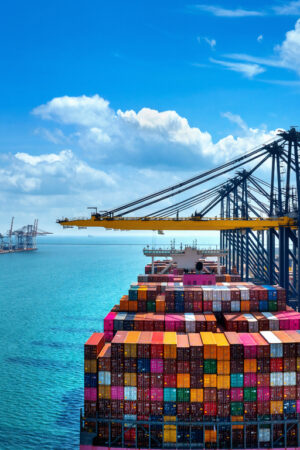The only certainty the shipping industry can rely on in 2024 is that it will be a year of uncertainty and unexpected shocks to the established order of world trade.
The companies that will emerge strongest from this period of unpredictability will be the most agile, both in deploying their financial resources and adjusting quickly to changing geopolitical or environmental factors.
Lines of communication from ship to shore, and between departments, will have to be shortened to react to ever-changing events and companies must ensure their cyber security is at the cutting edge so malign forces cannot hack into their systems and take control of vessels.
The maritime sector has been highly volatile since Covid. Shipping was hugely disrupted during the pandemic, forcing owners to borrow heavily to weather the storm. However, their balance sheets have been restored by a bounce-back in trade and halfway through 2023 ship owners were feeling upbeat as they had paid back the significant debts they had accumulated.
Also, the worst case scenario that many economists predicted – factories relocated near to home markets, reducing the amount of sea cargo – failed to materialise.
As those same companies enter a new year the outlook is very different. Continued military action in Ukraine combined with conflict in the Middle East and heightening tensions in Asia have forced many cargo lines back into emergency mode.
Container fleet operators rerouted vessels that would normally have sailed through the Suez Canal round the Cape of Good Hope in response to rocket attacks from Houthi rebels in Yemen against ships in the Red Sea and Gulf of Aden.
This adds 10-12 days to a trip and requires extra fuel. The knock-on effect is that ships find themselves out of position relative to their normal schedule which, in turn, results in bottlenecks and a shortage of free ships to move goods. The financial effect of all this is a doubling of cargo shipping rates, from around $1,400 for a standard 40-foot container from Shanghai to Rotterdam to $3,100.
Another unexpected factor is a lack of rain in tropical Central America. The result is that water levels in the Panama Canal – which handles $270 billion worth of global trade annually – have been so low that restrictions have been placed on the number of ships in the system at any one time.
However, shipping companies cannot focus solely on current problems as a considerable net zero challenge will begin to loom larger in 2024.
The current merchant fleet will struggle to meet the International Maritime Organisation’s ambition to reduce the carbon intensity of shipping by 40% by 2030 and reach net zero greenhouse gas emissions by 2050.
The bill for new ships and parallel investment in alternative fuels and modernised port infrastructure will run into trillions of dollars.
Banks, the traditional source of lending, are now reluctant to advance loans to companies that cannot prove their green credentials, so having an independently verified ESG audit showing progress on reducing carbon emissions will become a minimum requirement.
One of the key areas lenders now focus on is the propulsion system. The diesel engines that power the majority of container ships are responsible for 3% of the world’s carbon emissions and pressure is being applied to find alternatives.
Various combinations of liquefied natural gas (LNG), ammonia and hydrogen have been proposed and each has advocates and advantages. The solution gaining ground more recently is nuclear power, which is currently restricted to ice breakers and naval aircraft carriers and submarines. A new generation of compact reactors could provide carbon-free power for merchant ships of all sizes.
Reaching a consensus on this crucial issue would at least give some clarity in what promises to be a year of squalls and storms.





















